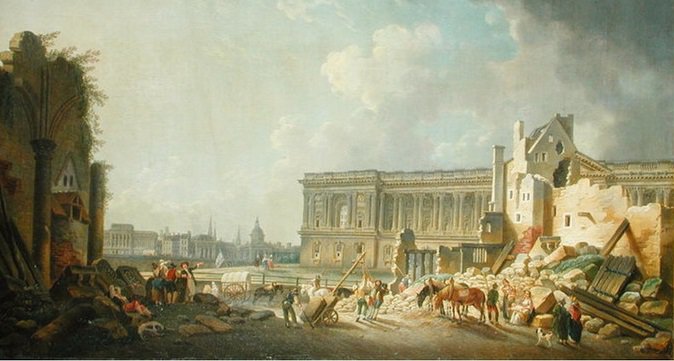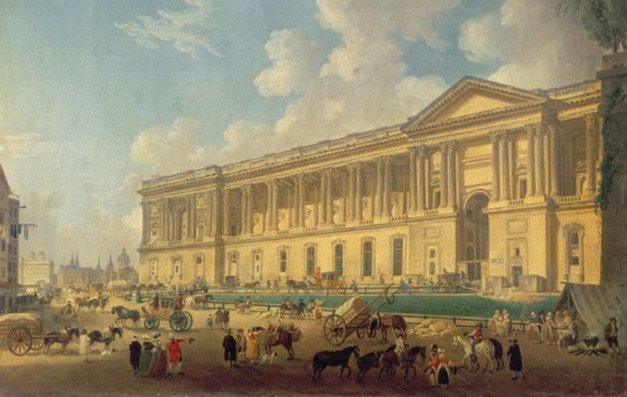When the Mozarts first visited Paris in the early 1760s, they would have seen the colonnade of the Louvre, widely considered a masterpiece of French classical architecture. Designed by Claude Perrault (1613-1688) and largely constructed between 1667 and 1670, the colonnade was renovated during the eighteenth century, including 1763-1764 and 1766, the years of the Mozarts' visits, and much of it, including the Hôtel du Petit-Bourbon, the Ecuries de la Reine and the Garde-Meuble, was obscured.

Pierre-Antoine Demachy, Dégagement de la colonnade du Louvre, c1765 (Paris, Musée Carnavalet)
When Mozart and his mother returned to Paris in 1778, however, the scaffolding and debris had been removed and Mozart would have witnessed first hand a signal achievement in urban renewal during the reign of Louis XV. Mozart’s mother remarked on Paris's urban sprawl in a letter to Leopold of 14 May 1778:
- Things have changed very much in Paris since we were here last. It is much bigger and is so spread out that I simply cannot describe it. For instance, the Chausée d’Antin, where Monsieur Grimm lives, is a completely new suburb and there are many other fine wide streets like it. . . I have a new map of the town, which is quite different from our old one.

Pierre-Antoine Demachy, La colonnade du Louvre, nouvellement dégagée, 1773 (Paris, Musée Carnavalet)